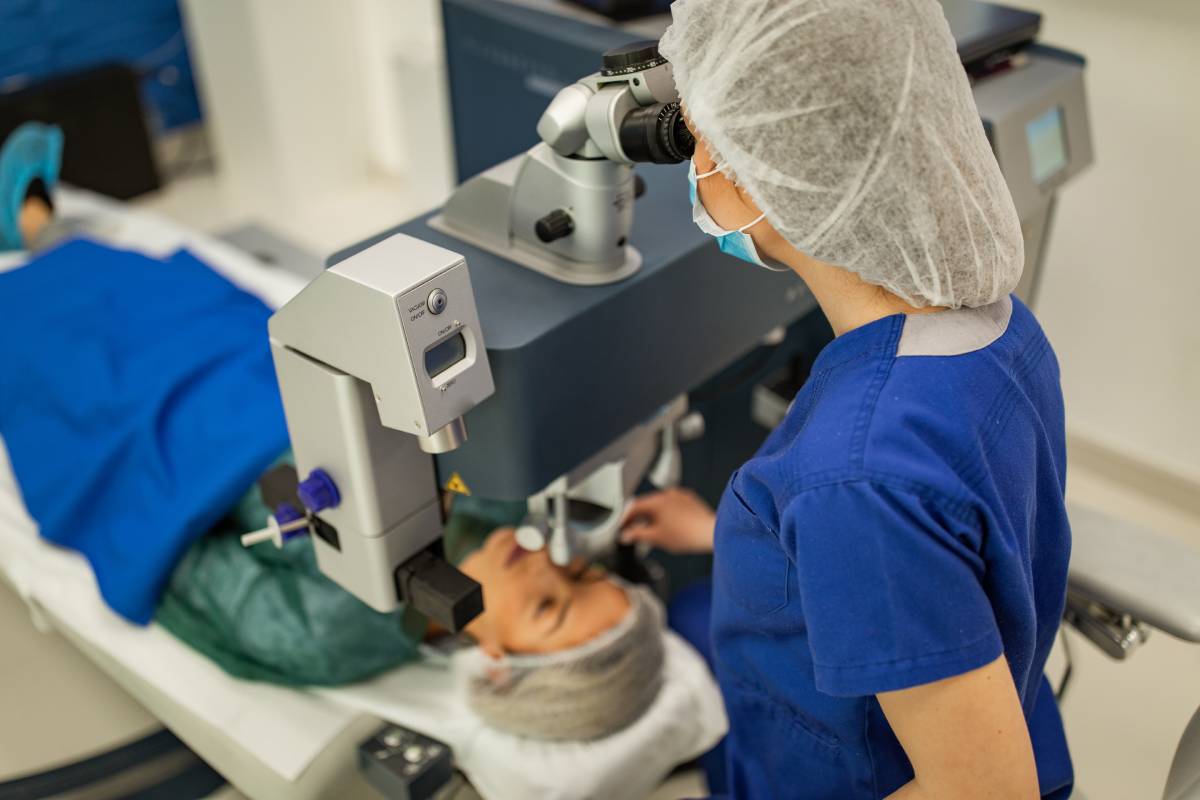Cataract surgery is one of the most common surgical procedures performed worldwide [1]. The procedure repairs the crystalline lens of the eye when opacification has become so significant that visual impairment occurs [1]. Cataracts have a variety of causes, including excessive ultraviolet radiation and the use of tobacco-related products; however, the most common cause is age [1]. Once a person’s visual acuity is measured at 20/40 or worse due to cataracts, cataract surgery is their only treatment option [1]. Fortunately, owing to its long history and recent advancements in technology, cataract surgery also has high success rates, with more than 95% of patients reporting safe outcomes [1, 2].
The first documented form of cataract surgery was couching [1]. During this procedure, the cataract was not removed, but rather dislodged [1]. Accordingly, while visual impairment could immediately improve following surgery, complications often followed [1]. Couching was replaced by extracapsular cataract extraction (ECCE), which consists of making an incision on the cornea to extract pieces of the lens cortex [1]. Early forms of ECCE led to considerable complications, including poor healing and infection, but the invention of viscosurgical devices and intraocular lenses revitalized the technique [1]. Despite these improvements, the current dominant technique is phacoemulsification (PHACO) [1]. During PHACO, an ultrasound-driven needle makes a 3 to 4 mm incision (much smaller than the 10 mm incisions made during ECCE) in the lens of the eye to emulsify and aspirate it [1]. The benefits of this technique include increased safety, reduced recovery time, and decreased risk of surgically-induced astigmatism [1].
Despite PHACO’s proven efficacy, an alternate method, known as small incision cataract surgery (SICS), is often used in lower resource areas due to its cost-effectiveness [3]. While SICS is also considered safe, it was initially unclear how its success rate compared to that of PHACO [4]. A 2017 French study sought to compare the methods by creating two randomized groups of cataract patients (n = 57), half of which would undergo PHACO, with the other half receiving SICS [4]. While both techniques led to desirable results, SICS prevailed over PHACO in terms of cost, speed, and requisite technology, suggesting that it is not an inferior technique [4].
Although cataract surgery is considered highly safe, there are some associated complications that physicians must account for. The most common complication of modern cataract surgery is posterior capsular opacification, which, luckily, can be corrected with a YAG laser capsulotomy [2]. Another potential complication is intra-operative posterior capsular rupture [2]. When this occurs, it can lead to adverse effects such as a dropped nucleus, vitreous loss, post-operative cystoid macular edema, and even retinal detachment [2]. The most threatening complication of this procedure is endophthalmitis; fortunately, the advent of intracameral antibiotics has severely reduced its likelihood of occurrence [2].
To avoid complications, some sources suggest engaging in more comprehensive preoperative testing to fully assess patients’ risk [2]. However, recent studies have found that testing may lead to unchanged or actively worse outcomes [5, 6]. One meta-analysis of 21,153 cataract surgeries found that while tested patients paid 2.55 times as much money to the hospital, they did not experience a reduced risk of adverse ocular events [5]. On the other hand, a retrospective study of Medicare beneficiaries from 2006 to 2014 found that preoperative medical testing was associated with 43% more falls and delayed surgeries [6].
To minimize the risk of cataract surgery complications, physicians likely must strike a balance between testing and expediency. By doing so, cataract surgery, an already largely successful procedure, can produce even better outcomes worldwide.
References
[1] G. Davis, “The Evolution of Cataract Surgery,” Missouri Medicine, vol. 113, no. 1, p. 58-62, January-February 2016. [Online]. Available: https://www.ncbi.nlm.nih.gov/pmc/articles/PMC6139750/.
[2] E. Chan, O. A. R. Mahroo, and D. J. Spalton, “Complications of cataract surgery,” Clinical and Experimental Optometry, vol. 93, no. 6, p. 379-389, March 2010. [Online]. Available: https://doi.org/10.1111/j.1444-0938.2010.00516.x.
[3] W. H. Dean, “Quality of small incision cataract surgery,” Community Eye Health, vol. 28, no. 90, p. 30-31, 2015. [Online]. Available: https://www.ncbi.nlm.nih.gov/pmc/articles/PMC4675261/.
[4] I. Ammous et al., “Phacoemulsification versus manual small incision cataract surgery: Anatomic and functional results,” Journal français d’opthalmologie, vol. 40, no. 6, p. 460-466, May 2017. [Online]. Available: https://doi.org/10.1016/j.jfo.2017.02.005.
[5] L. Keay et al., “Routine preoperative medical testing for cataract surgery,” Cochrane Database of Systematic Reviews, vol. 1, no. CD007293, January 2019. [Online]. Available: https://doi.org/10.1002/14651858.CD007293.pub4.
[6] C. L. Chen et al., “Preoperative Medical Testing and Falls in Medicare Beneficiaries Awaiting Cataract Surgery,” Ophthalmology, vol. 128, no. 2, p. 208-215, February 2021. [Online]. Available: https://doi.org/10.1016/j.ophtha.2020.09.013.


